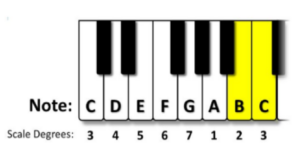The US Court of Appeals for the Sixth Circuit reversed a district court’s summary judgment of noninfringement in a copyright dispute, finding that the transfer of ownership prior to the display of the copyrighted work conferred standing to sue for any alleged infringement. Joe Hand Promotions, Inc. v. Griffith, Case No. 21-6088 (6th Cir. Sept. 21, 2022) (Clay, Rogers, Stranch, JJ.)
On August 26, 2017, world-famous boxer Floyd Mayweather Jr. and famous mixed martial arts fighter Conor McGregor engaged in what became one of the most legendary fights of all time (Fight). Showtime produced the Fight, charging a $99.99 personal use license and more expensive commercial streaming licenses for public viewing in a commercial setting. Two months prior to the event, on June 20, 2017, Showtime entered into a distribution agreement with Mayweather Promotions granting an exclusive license “to exhibit and distribute, and authorize the exhibition and distribution” of the Fight in a defined territory via the internet. On August 1, 2017, Mayweather in turn entered into a Commercial Licensing Agreement with Joe Hand Promotions (JHP), a smaller distributor. The agreement granted “the sole and exclusive third party license … to distribute … and authorize the public exhibition of the [Fight]” in a designated area. JHP then promoted the event and sold commercial licenses authorizing live broadcast at bars and restaurants.
There was no copyright registration at the time the Fight aired. However, the Copyright Act allows registration of live events within three months, and Showtime applied for a copyright within two months. On November 21, 2017, Showtime signed a Copyright Agreement with JHP, granting JHP “the exclusive right to distribute and publicly perform the [Fight] live on August 26, 2017,” “the exclusive right … to take enforcement actions,” and “the right and standing, as exclusive assignee, to assert independent claims, solely in the name of [JHP], for copyright infringement.” Mayweather Promotions, although a nonparty, also signed.
JHP then sued several restaurants, including Griffith, which livestreamed the Fight in a public setting without paying the commercial license fee. Griffith had paid for a personal use license, but then used an HDMI cable to connect a personal device to a TV and broadcast the live show in the restaurant. Griffith also promoted the Fight on the restaurant’s Facebook page and charged a $6 entry fee for patrons to watch the Fight. Both parties filed cross-motions for summary judgment. The district court granted Griffith’s motion, finding no evidence of copyright ownership on the day of the Fight. The court found that because the Copyright Agreement granted rights retroactively, JHP was granted a mere right to sue, which was insufficient for ownership. JHP appealed.
Griffith argued on appeal that because there was no copyright registration at the time of the event, any exclusive rights granted by the Copyright Agreement were illusory and insufficient to establish ownership. In response, JHP argued that Showtime intended such retroactive grant of rights, as evidenced by the Commercial Licensing Agreement with Mayweather Promotions. The Sixth Circuit agreed with [...]
Continue Reading
read more

 Subscribe
Subscribe



